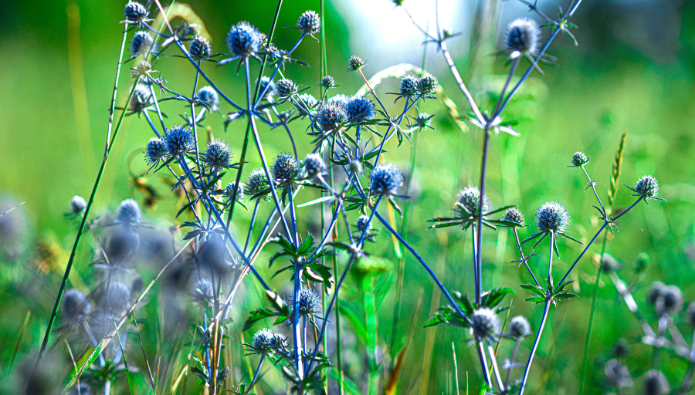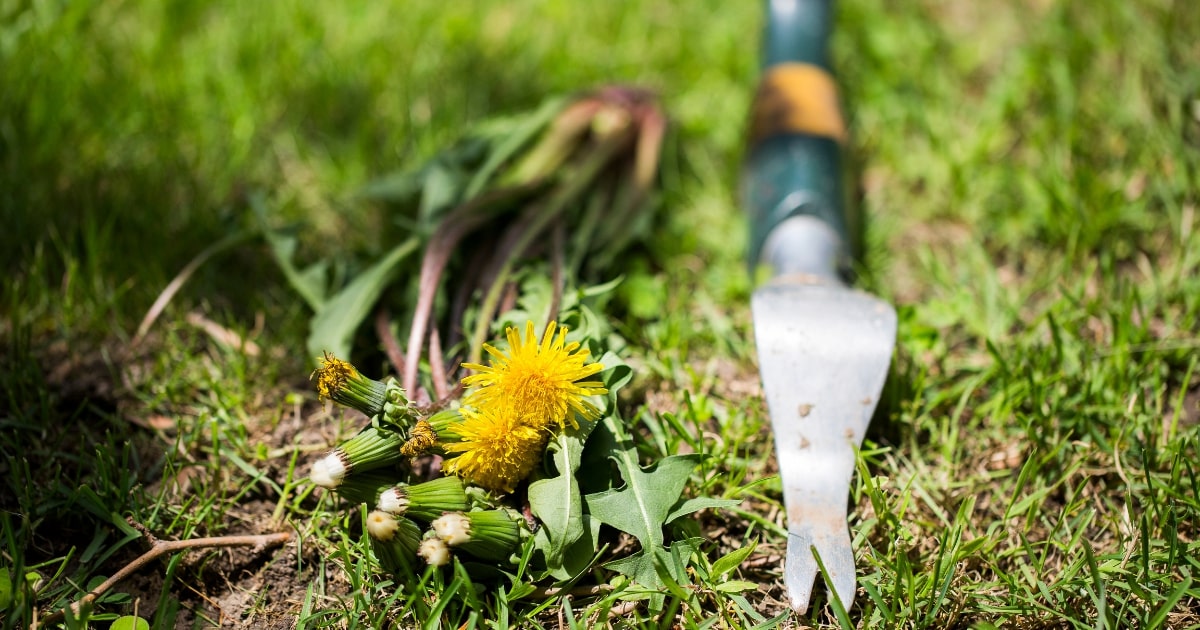In the rich tapestry of Jesus’ teachings, the Parable of the Weeds, found in Matthew 13:24-30, with its explanation in verses 36-43, stands out for its profound insight into the nature of the Kingdom of Heaven and the reality of good and evil coexisting in our world. This parable, delivered by Jesus to a crowd and later explained to His disciples, provides a vivid illustration of a field where both wheat and weeds grow together until the harvest, symbolizing the intermingling of righteousness and wickedness in life’s vast field.
At its core, the Parable of the Weeds is not just a story about agriculture but a deeper lesson on patience, judgment, and the ultimate sovereignty of God over the final outcome of both the righteous and the wicked. It challenges us to reflect on our own lives, the judgment we pass on others, and our role in a world where good and evil are often intertwined.
This blog post seeks to delve into the Parable of the Weeds, unpacking its narrative layer by layer to uncover the rich spiritual lessons it holds. We will explore the symbolism behind the sowing of the seeds, the growth of the weeds among the wheat, and the implications of the harvest. Moreover, we will discuss the practical implementation of this parable in our daily lives, offering insights into how we can navigate a world filled with both good and evil influences.
Join us as we journey through this captivating parable, seeking to understand its teachings and how they apply to our lives today. From discernment in judgment to the anticipation of a righteous harvest, the Parable of the Weeds invites us into a deeper understanding of our place in God’s grand design.
Also Read: Parable of Jesus: The Olivet Discourse
Parable of Jesus Christ: The Weeds
The Parable of the Weeds (Matthew 13:24-30 NIV): Jesus told them another parable: “The kingdom of heaven is like a man who sowed good seed in his field. But while everyone was sleeping, his enemy came and sowed weeds among the wheat, and went away. When the wheat sprouted and formed heads, then the weeds also appeared.
“The owner’s servants came to him and said, ‘Sir, didn’t you sow good seed in your field? Where then did the weeds come from?’
“‘An enemy did this,’ he replied.
“The servants asked him, ‘Do you want us to go and pull them up?’
“‘No,’ he answered, ‘because while you are pulling the weeds, you may uproot the wheat with them. Let both grow together until the harvest. At that time I will tell the harvesters: First collect the weeds and tie them in bundles to be burned; then gather the wheat and bring it into my barn.'”
The Parable of the Weeds Explained (Matthew 13:36-43 NIV): Then he left the crowd and went into the house. His disciples came to him and said, “Explain to us the parable of the weeds in the field.”
He answered, “The one who sowed the good seed is the Son of Man. The field is the world, and the good seed stands for the people of the kingdom. The weeds are the people of the evil one, and the enemy who sows them is the devil. The harvest is the end of the age, and the harvesters are angels.
“As the weeds are pulled up and burned in the fire, so it will be at the end of the age. The Son of Man will send out his angels, and they will weed out of his kingdom everything that causes sin and all who do evil. They will throw them into the blazing furnace, where there will be weeping and gnashing of teeth. Then the righteous will shine like the sun in the kingdom of their Father. Whoever has ears, let them hear.”
Interpretation of The Parable of The Weeds

The Parable of the Weeds, as recounted in Matthew 13:24-30 and explained by Jesus in verses 36-43, is a profound allegory that offers multiple layers of spiritual and ethical insights. Through the narrative of a field sown with both wheat and weeds, Jesus communicates profound truths about the Kingdom of Heaven, human nature, and the ultimate judgment.
Also Read: The 45 Parables of Jesus
The Coexistence of Good and Evil
In the parable, the field represents the world, and the sowing of good seed and weeds together illustrates the mingling of good and evil in human society. This coexistence poses a challenge to discernment and judgment, reminding us that righteousness and wickedness often exist side by side, sometimes indistinguishably, until a definitive separation at the end of the age.
The Reality of Evil's Presence
The weeds, sown by an enemy, symbolize the influence and presence of evil in the world, introduced with the intent to disrupt and destroy. This aspect of the parable acknowledges the reality of evil’s active opposition to good, reflecting the spiritual battles that underpin the human experience.
Divine Patience and Judgment
The farmer’s decision to allow both wheat and weeds to grow together until the harvest demonstrates divine patience. This patience underscores God’s willingness to allow time for repentance and transformation, emphasizing the value of every soul and the hope that many will turn towards righteousness before the final judgment.
The Harvest as Final Judgment
The harvest symbolizes the end of the age, where angels, as reapers, will execute God’s judgment, separating the righteous from the wicked. This separation highlights the ultimate accountability of all individuals to divine judgment, based on their response to God’s word and their deeds.
Living Among the Weeds
For believers, the parable is a call to persevere in faith and righteousness, even when surrounded by the influence of evil. It encourages a focus on personal spiritual growth and integrity, rather than attempting to judge or remove the “weeds” prematurely, acknowledging that judgment belongs to God alone.
The Assurance of God's Sovereignty
Despite the apparent triumph of evil at times, the parable assures us of God’s ultimate control over history and individual destinies. It offers comfort that, in the end, righteousness will prevail, and evil will be justly dealt with.
Also read: Parable of Jesus: The Barren Fig Tree
Practical application of the Parable of the Weeds in Our Daily Lives

How can you apply The Weeds Parable in practically in your daily life? Let’s take a look at it.
The Parable of the Weeds, while deeply theological, offers profound practical insights for navigating our everyday lives amidst the complexities of good and evil. Understanding how to live out the lessons of this parable can transform our interactions, our judgments, and our contributions to the world around us.
Cultivating Patience and Tolerance
Living Among the Weeds: Recognizing that the weeds grow alongside the wheat in the world teaches us the importance of patience and tolerance. In our communities and workplaces, we encounter a mix of influences; not everyone will share our values or beliefs. Instead of rushing to judgment or action against those we perceive as “weeds,” we can learn to coexist peacefully, understanding that transformation and growth take time.
Avoiding Premature Judgment: The parable warns against the urge to uproot the weeds before the harvest, which can harm the wheat. This teaches us to be cautious in our judgments and actions towards others. Quick judgments can lead to misunderstandings or harm to innocent parties. Patience allows us to see more clearly and act more wisely.
Focusing on Personal Growth
Nurturing the Wheat Within: The presence of the weeds challenges us to focus on our own growth and the cultivation of positive qualities within ourselves. We can strive to be the best versions of ourselves, contributing positively to our environments, and influencing others through our actions and characters.
Seeking Spiritual Nourishment: Just as the wheat needs proper care to grow, our spiritual lives require regular nourishment. Engaging with scripture, prayer, and community can strengthen our roots and help us stand tall among the weeds, bearing fruit that can inspire change in others.
Engaging with Wisdom and Discernment
Discerning the Weeds: While the ultimate judgment is God’s, we are called to discern the influences in our lives. This means identifying behaviors, habits, or even relationships that may hinder our growth or lead us away from our values. Wisdom and discernment allow us to recognize what should be embraced and what may need distance.
Influencing with Care: The parable does not call for the isolation from the world but rather a wise engagement with it. We can be agents of positive change, influencing the “weeds” around us through compassion, understanding, and the example of our lives without compromising our principles.
Preparing for the Harvest
Living in Readiness: The harvest symbolizes the end times, but it also reminds us to live in a state of readiness, making the most of the time we have. This means actively engaging in works of faith, charity, and community building, laying up treasures in heaven rather than earth.
Reflecting on Eternity: The eventual separation of wheat and weeds serves as a sobering reminder of eternity. It encourages us to live lives that reflect our ultimate hopes and beliefs, focusing on what is truly important and eternal.
Building Community
Strengthen Community Ties: The challenges described in the Olivet Discourse highlight the importance of a supportive faith community. Strengthening these ties provides a network of support, encouragement, and mutual edification, essential for navigating the end times or personal tribulations.
Conclusion

In concluding our exploration of the Parable of the Weeds, we’ve journeyed through a rich landscape of spiritual insight and practical wisdom. This parable, set in the simplicity of a farmer’s field, unfolds profound truths about the coexistence of good and evil—the wheat and the weeds—in the world and, by extension, in our lives. It challenges us to recognize the complexity of human nature and the patience required to navigate life’s moral and ethical dilemmas.
The Weeds, sown by an enemy to disrupt and confuse, serve as a metaphor for the challenges and negative influences we encounter daily. Yet, the parable’s enduring message is one of hope and redemption, reminding us that growth and transformation are always possible under the watchful eye of the divine gardener. It calls us to live with tolerance, to focus on our personal growth amidst the weeds, and to act with wisdom and discernment.
Practically applying the lessons of the Parable of the Weeds in our daily lives empowers us to engage with the world more thoughtfully and compassionately. We learn the value of nurturing the wheat within ourselves and others, contributing to a harvest rich in righteousness and peace. As we navigate the fields of our own experiences, let us do so with the knowledge that the presence of weeds is a part of the divine plan, challenging us to grow stronger and more resilient in our faith and actions.
Ultimately, the Parable of the Weeds is a call to vigilant living and faithful stewardship, awaiting the harvest with hope. It invites us to reflect on the nature of our contributions to the world—are we fostering growth among the wheat, or are we entangled in the weeds? By embracing the wisdom of this parable, we can strive to be fruitful, to shine like the sun in the kingdom of our Father, and to make our world a richer, more verdant place.
Read the next Parable: Parable of Jesus: The Growing Seed








